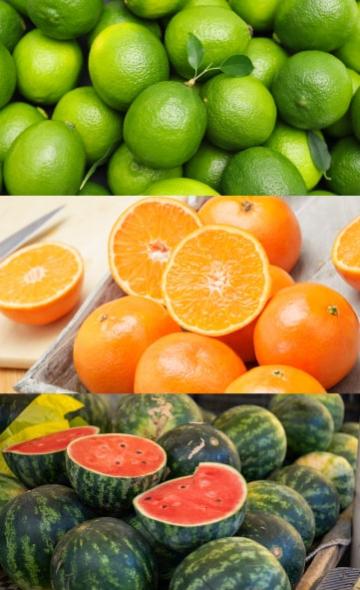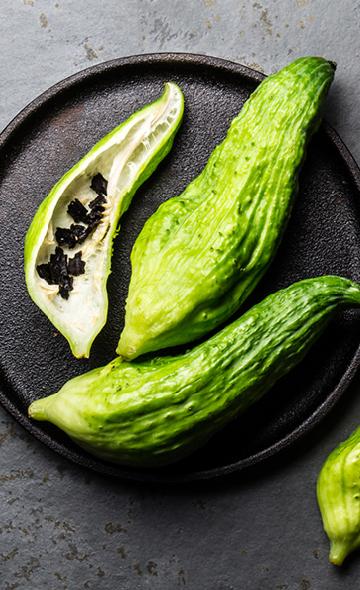- Visitors
- Researchers
- Students
- Community
- Information for the tourist
- Hours and fees
- How to get?
- Visitor Regulations
- Virtual tours
- Classic route
- Mystical route
- Specialized route
- Site museum
- Know the town
- Cultural Spaces
- Cao Museum
- Huaca Cao Viejo
- Huaca Prieta
- Huaca Cortada
- Ceremonial Well
- Walls
- Play at home
- Puzzle
- Trivia
- Memorize
- Crosswords
- Alphabet soup
- Crafts
- Pac-Man Moche
- Workshops and Inventory
- Micro-workshops
- Collections inventory
- News
- Students
- 9 foods that were found in the Chicama Valley with an unexpected origin
News
CategoriesSelect the category you want to see:

Magdalena de Cao to Once Again Host an International Mural Art Gathering ...

Explore El Brujo Through Virtual Tours: Culture and History at a Click ...
To receive new news.
By: Complejo Arqueológico El Brujo
The Chicama Valley, located on the beautiful northern coast of Peru, has been a vibrant agricultural center since pre-Hispanic times. Archaeological excavations have revealed the presence of species that changed the local diet. Here are 9 of these foods: peach, orange, lemon, lime, pomegranate, olive, quince, plum and watermelon. These fruits were not only integrated into traditional cuisine, but also became part of the region's agriculture.
Thanks to excavations in the colonial town of Magdalena de Cao, part of the El Brujo Archaeological Complex, the foods that were consumed in the Chicama Valley between the sixteenth and eighteenth centuries were discovered. Their origin will surprise you!
Discover the origins of 9 foods found in the Chicama Valley
Dr. Jeffrey Quilter's research revealed the presence of peaches, oranges, lemons, limes, and pomegranates, all native to Asia, olives, quinces and plums, from Southern Europe and Asia Minor, and watermelons, native to Africa. These fascinating finds show us the incredible diversity of the colonial diet and how influences from different parts of the world were integrated into the local diet. A cultural mix that we can still enjoy today at our tables!
Peach
The peach, native to China, is known for its delicious flavor and multiple health benefits. It is also an excellent source of vitamins A and C, potassium and fiber. These vitamins and minerals contribute to eye health, strengthen the immune system, and improve digestion.
Orange
The orange, native to Southeast Asia, is one of the most popular and consumed fruits in the world. It is a rich source of vitamin C, fiber, and antioxidants. Regular consumption can strengthen the immune system, improve cardiovascular health, and promote good digestion.
Lemon
The lemon, whose origin is in Asia, is valued for its multiple medicinal properties and its use in cooking. It stands out for being a rich source of vitamin C, flavonoids, and citric acid. These components help strengthen the immune system, improve iron absorption, and promote healthy skin.
Lime
The lime, also native to Asia, shares many beneficial properties with lemon. It is rich in vitamin C, antioxidants, and organic acids that serve to strengthen the immune system, improve skin health, and promote good digestion.
Grenade
The pomegranate, native to Western Asia and the Mediterranean, is a fruit that has been cultivated since ancient times. It is rich in antioxidants, vitamins C and K, and minerals such as potassium. These nutrients contribute to the reduction of the risk of cardiovascular diseases and have anti-inflammatory and anti-cancer properties. It is also known to improve digestive health due to its high fiber content.
Olive
The olive, native to the Mediterranean, is known for its high content of healthy fats and antioxidants. It contains vitamin E, iron, and dietary fiber. By consuming olives and olive oil we can reduce the risk of cardiovascular disease, improve digestive health, and protect cells from oxidative damage.
Quince
The quince, native to the Caucasus region, is a fruit that has been valued for its medicinal properties and versatility in the kitchen. It is a good source of vitamin C, fiber, and antioxidants, which helps improve digestion, strengthen the immune system, and fight inflammation.
Plum
The plum, coming from Asia, is a fruit appreciated for its flavor and benefits, as it has vitamins A and C, fiber and antioxidants. Its regular consumption can improve digestive health, strengthen the immune system, and protect against cellular aging. In addition, plums contain compounds that can help regulate blood sugar levels and reduce inflammation.
Watermelon
The watermelon, native to Africa, is a refreshing and nutritious fruit, especially popular in hot weather. It has vitamins A and C, antioxidants, and lycopene, that are essential for eye health, protection against cell damage, and reduced risk of cardiovascular disease. Watermelon is also known for its high water content, making it ideal for hydration.
Impact and legacy that accompanies us to this day
The introduction of these foods brought by the Spaniards had a profound impact on the agriculture and gastronomy of the Chicama Valley. These plants not only enriched the local diet, but also transformed the agricultural and economic landscape of the region. The integration of these 9 crops reflects an adaptation process that lasts to this day.
Currently, these foods are still essential in Peruvian cuisine, and their history reminds us of the richness and diversity of the agricultural heritage of the Chicama Valley. Knowing the history allows us to better appreciate the culinary heritage we enjoy at our tables.
Students , outstanding news





